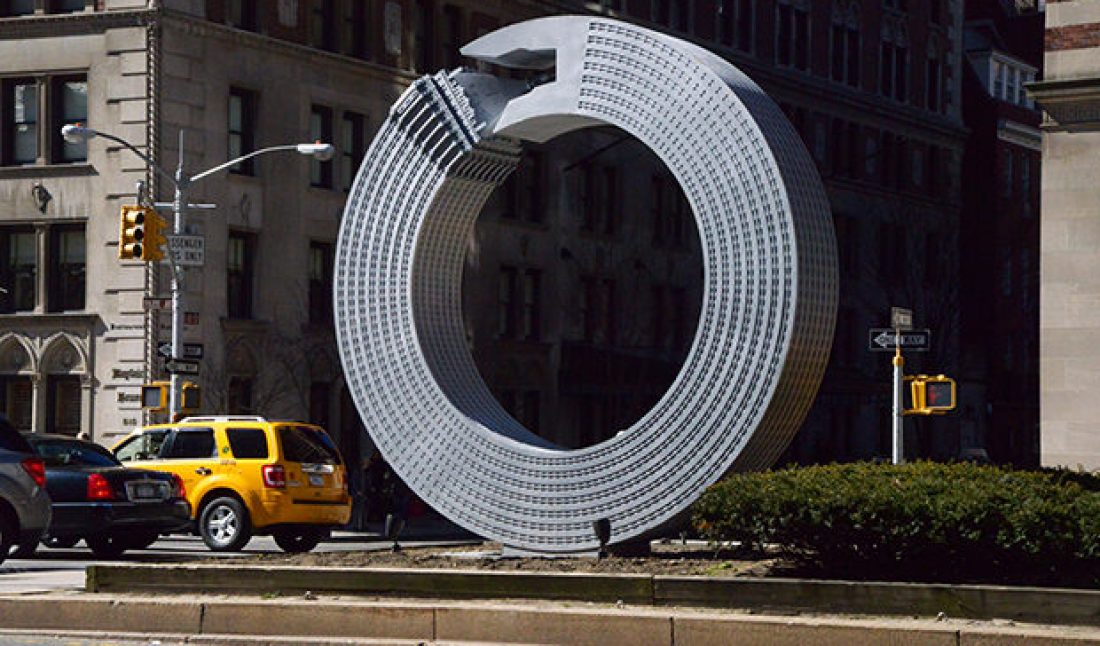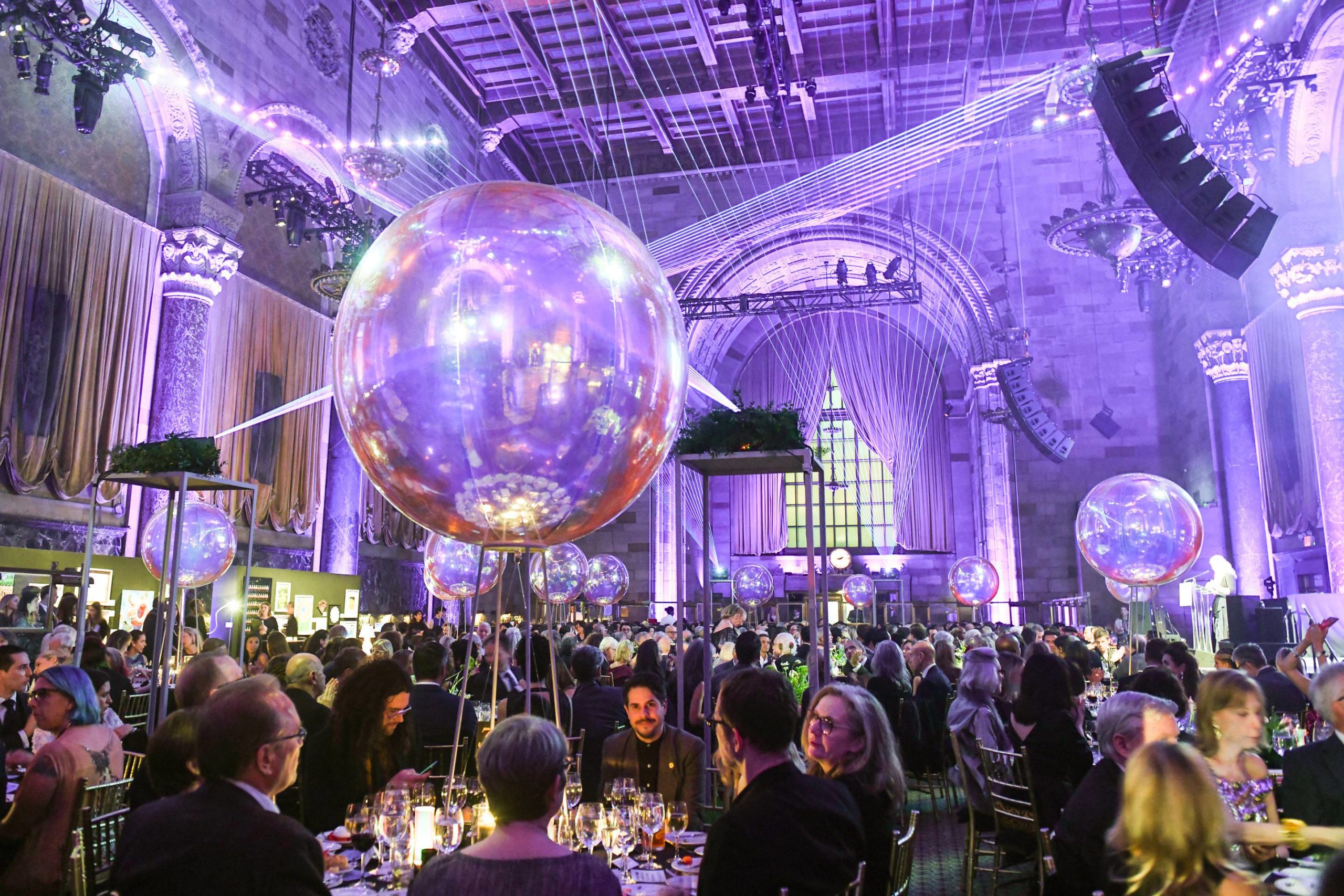Last night, friends and supporters gathered to support artist Alexandre Arrechea and to toast the completion of his latest installation, “No Limits.” On view now through June 9, Arrechea’s installation re-interprets the architecture of New York and invites New Yorker’s into a dialogue about architecture, power, and community.
Representing buildings throughout Park Avenue, “No Limits” features ten massive sculptures that reflect the architecture of Park Avenue, and the Chrysler and Empire State Building. Presented by Magnan Metz Gallery, in conjunction with New York City’s Department of Parks and Recreation and The Fund for the Park Avenue Sculpture Committee, the installation, running along the median of Park Avenue, begins at 53rd Street and progresses uptown to 67th Street.
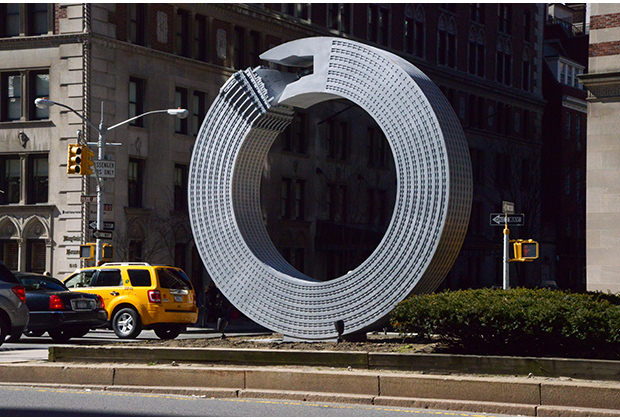 Steel
SteelSpeaking to Whitewall before the event last night, Arrechea said the realized sculptures exceeded his initial plans, but to wonderful effect.
“One of the things that was most important was the opportunity they gave me to have a dialogue with the city of New York as I have always imagined,” said Arrechea of the project. “The best thing to do was to present something to engage the architecture of New York, to include most of the buildings of the avenue, so people could actually relate while looking at the sculptures.”
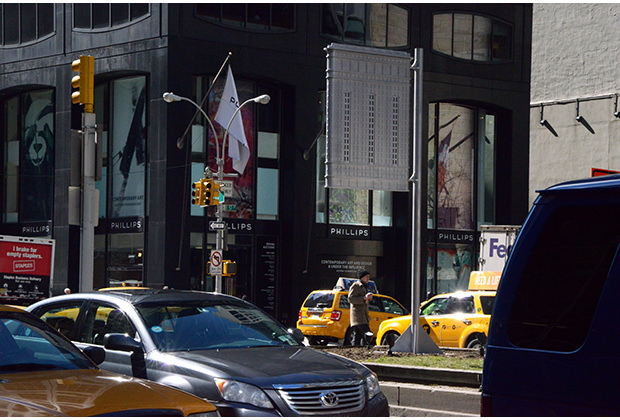 20 x 9.4 x 3.3 feet
20 x 9.4 x 3.3 feet
In order to engage the viewer, Arrechea felt the sculptures had to be grander in scale than he initially envisioned. In the case of his rendering of the Chrysler Building, the sculpture reaches 20 feet. Arrechea acknowledges that size was important, as it provides a more accurate dialogue with the viewer and potentially sparks a realization of all that architecture can encompass, beyond being a structure that houses people and things.
“The dialogue goes beyond the architecture – I’m trying to intersect architecture with all the elements of the human condition. Failure, success – I want to create a sort of marriage between these different elements so people can see a sculpture that is in some ways problematic. It’s not standing for the sake of standing there.”
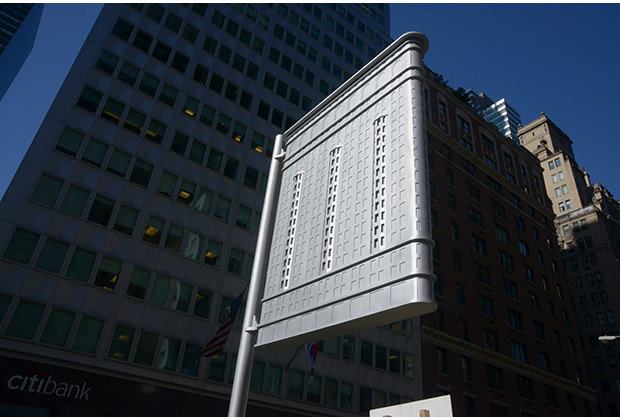 Steel
SteelMaking a few of the sculptures interactive was a way for Arrechea to further ensure interaction and a larger contextual placement in our overall lives. Both the MetLife Building and the Citigroup building sculptures include a spinning top element in a nod to the workings of our modern economy.
“This idea of creating the spinning top as a metaphor for the possibility of failure and making things go back and down again. It was ideal to bring this type of issue to New York. In some ways, this city is constantly trying to rebuild itself.”
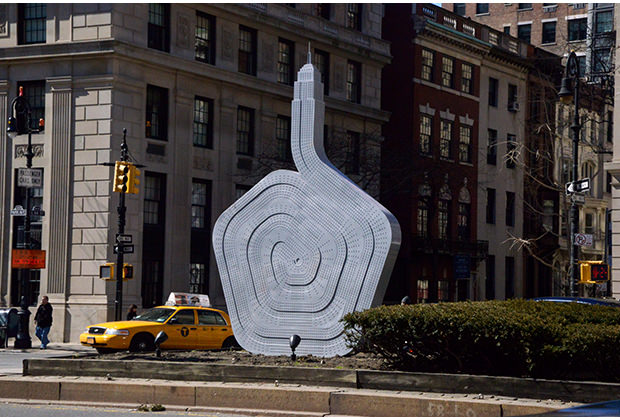 15 x 14.4 x 2.6 feet
15 x 14.4 x 2.6 feet
As for the sculpture depicting the Empire State Building, Arrechea returned to the recurring theme in his work: power and surveillance.
Arrechea transformed the Empire State building into a pentagon shape, a reference to this country’s most famous pentagon and what that particular building represents; essentially transforming it into a military post. This fear, the lingering anxiety of working and living in these large, iconic buildings in a post–9/11 world, mixed with the acceptance that these buildings are also a protection from the world, is where architecture becomes interesting and vital.
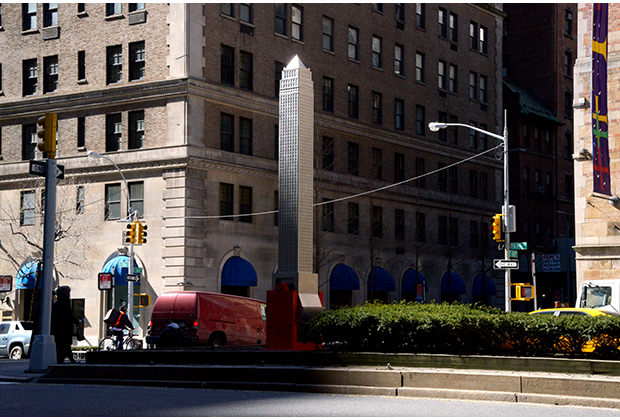 Aluminum
Aluminum“We wanted to make these buildings be inhabited by other experiences and events – to inhabit the place not only with life, but with other aspects of the human condition, such as fear.”
Arrechea’s interest in architecture began at a young age, while growing up in Trinidad, Cuba, amongst its 18th Century mansions.
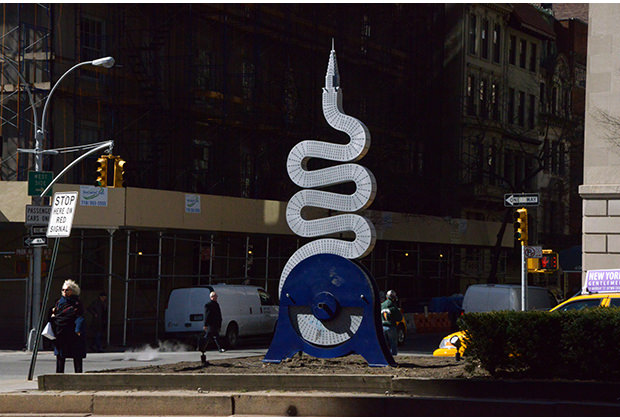 18 x 6.5 x .75 feet
18 x 6.5 x .75 feet
“I grew up in this environment of colonial architecture. When I was a kid, I wanted to enter into one those beautiful and enormous houses.”
At a young age, Arrechea began art school, and during his studies, he and his fellow students were tasked with drawing these beautiful buildings.
“By the time you are done with school, you have created a catalogue of the city of Trinidad. When I moved to Havana to study art, I had a teacher that introduced me to architecture in a different way. [My teacher said] this is about to change the lives of people who inhabit those buildings – an experience that shaped the rest of my career.”
Arrechea’s experience in Havana – of working intimately with families to help them achieve their idealized space, whether it was a new piece of art or installing more functional elements like cabinets or a piece of furniture – has guided Arrechea throughout his career, but definitely in this project.
“The project on Park Avenue in some ways contains all of those elements and experiences. This is so far the largest project I’ve ever done.”
In many ways, this large installation has given Arrechea the opportunity to create his own community.
“One of the things I’ve seen with this project is a tribute to collaboration. This project is so dependent on so many people. As an artist, I feel like a tool. Creating a community – a city – it’s just like a building. These guys that are helping me to build the work, in some ways they are inhabiting the works.”
Back at the party, Ron Pizzuti, noted art collector and host of the event, encouraged all to see the installation – multiple times. “See it three times,” Pizzuti urged. “Once the tulips come up, they’ll be even more beautiful.”
Born in Trinidad, Cuba, in 1970, Alexandre Arrechea graduated from the Instituto Superior de Arte (ISA) in Havana in 1994. He was a founding member of the collective Los Carpinteros (1994-2003). Arrechea represented his homeland in the first ever Cuban Pavilion at the 2011 Venice Biennale.






